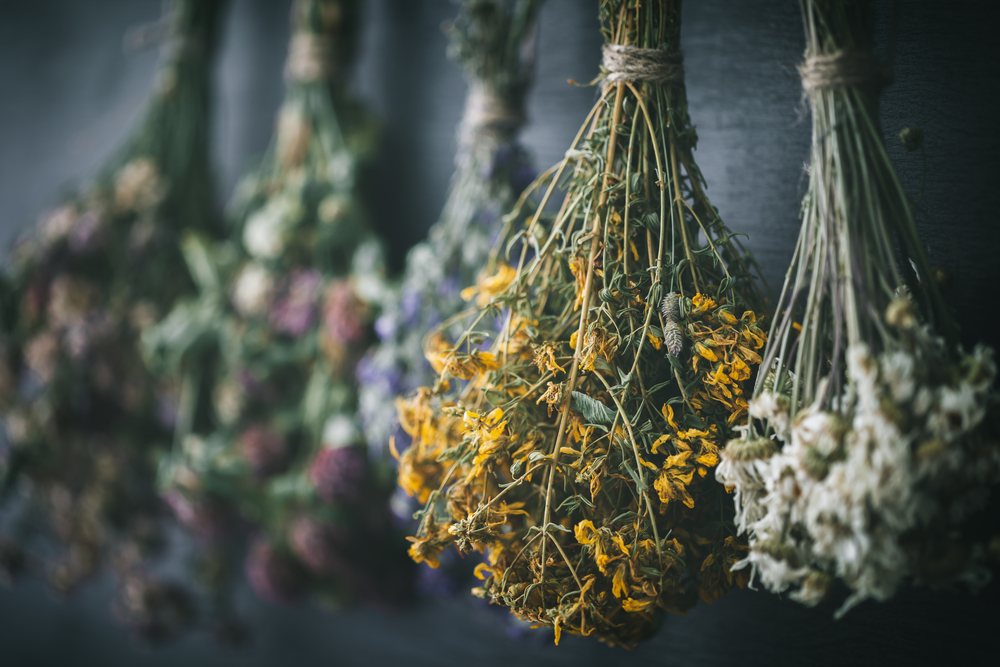
The use of plants for healing is as old as humankind.
Analysis of plants found in the 60,000 year old grave of a Neanderthal man were determined to be of medicinal value.
The oldest known medical document is a 4,000 year old Sumerian clay tablet that described plant remedies for various ailments.
Before the advent of chemical drugs in the 16th century, the discovery of bark, seeds, fruits, and flowers with healing properties was communicated from generation to generation, for many millennia.
In fact, numerous synthetic medicines developed in modern times were derived from, or inspired by, the chemical constituents found in nature.
Gentle on the body and readily available, therapeutic herbs are an extremely low cost way to get relief from many ailments and illnesses.
When you grow a medicinal garden, these remedies will always be available to you, and so they also provide a better sense of self-reliance.
Here are the essential healing herbs to grow for the home apothecary:
1. Aloe Vera
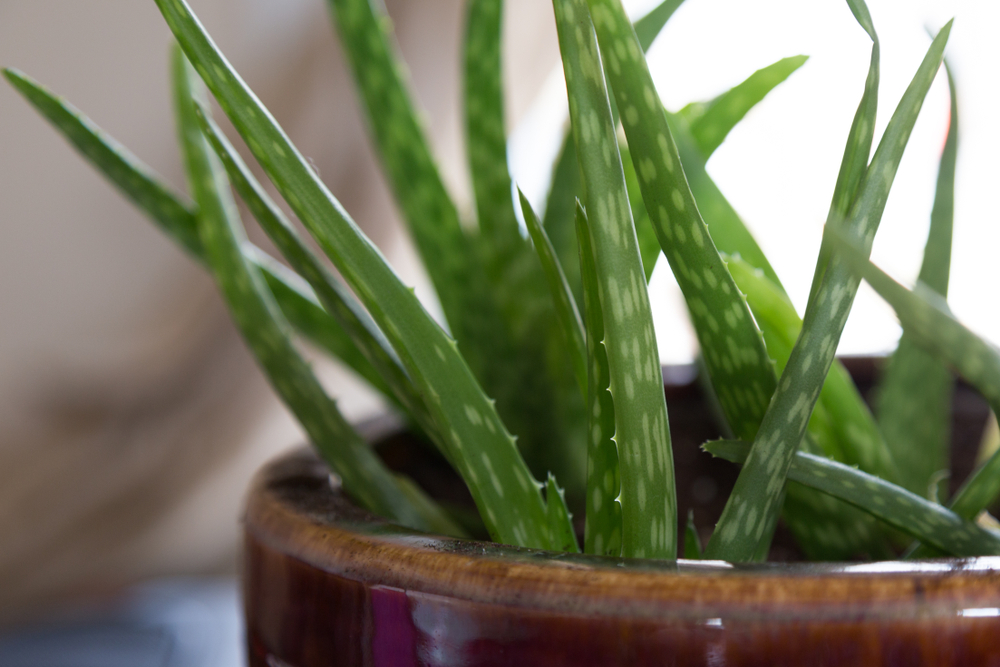
Native to the Arabian Peninsula, aloe vera can be found growing wild in tropical and arid climates around the globe.
An attractive succulent with thick serrated leaves, aloe has been celebrated for at least 2,000 years for its amazing skin care properties.
Medicinal Uses:
The gel-like substance found within aloe leaves contains 75 potentially active constituents, including vitamins A, C, and E, minerals, enzymes, amino acids, and fatty acids that provide its vast healing properties.
Use it topically to soothe cuts and wounds, burns, frostbite, sunburn, rashes, insect bites, dermatitis, and other skin woes.
It helps moisturize the skin, alleviate pain, speed up the healing process, reduce inflammation, and prevent scars from forming.
Growing Conditions:
Unless you live in USDA hardiness zone 10 or 11, aloe is best kept indoors as a houseplant.
Give it plenty of bright, indirect light and plant in a cacti potting mix for good drainage.
How to Use & Store:
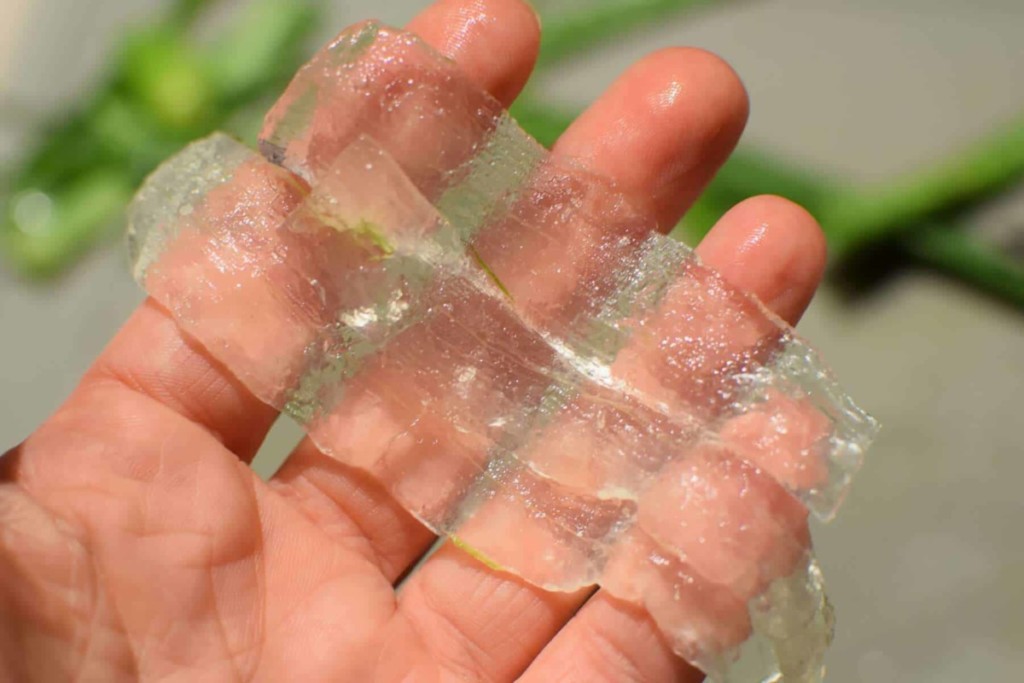
To apply aloe vera, slice off a portion of the fleshy leaf. Squeeze it gently to release the juice and rub it into the skin.
Although it’s best to use aloe fresh, it can be stored for longer periods by harvesting the gel and freezing it into individual portions with an ice cube tray.
Here’s our tutorial for harvesting aloe vera gel from the plant and the many ways to use it.
Cautions:
Raw aloe should only be used topically.
Do not ingest aloe vera juice as it contains aloin – a yellowish-brown compound found along the edge of the inner leaf. Aloin may be toxic when ingested in large amounts, causing diarrhea, abdominal pain, and electrolyte imbalance.
2. Chamomile
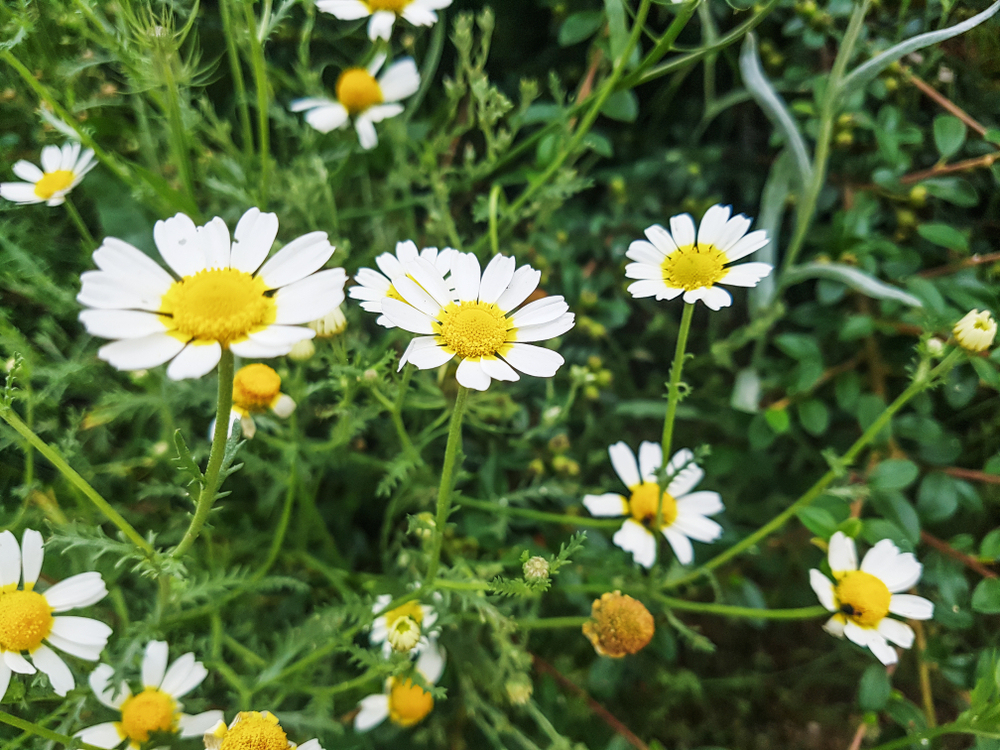
A pretty, daisy like plant that faintly smells of apples, chamomile is among the oldest and most ancient of medicinal herbs, and there are many ways to use it, both medicinally and non-medicinally.
The two best known varieties – Roman chamomile (Chamaemelum nobile) and German chamomile (Matricaria chamomilla) – contain several phenolic compounds such as flavonoids, quercetin, luteloin, and volatile oils.
These cultivars can be used interchangeably to treat many different kinds of ailments.
Medicinal Uses:
Chamomile flowers have been used for centuries as an all-purpose anti-inflammatory with numerous internal and external applications.
When consumed as tea, it has mild sedative and calming effects that can be helpful to treat anxiety, nightmares, and insomnia.
Chamomile has also been used to treat several gastrointestinal issues, including indigestion, nausea, vomiting, diarrhea, and flatulence.
It has pain relieving properties too, for back pain, arthritis, and stomach cramps.
When used topically, chamomile soothes and heals the skin. Use it to remedy flesh wounds, bruises, burns, and rashes. It is also helpful in relieving eczema, hemorrhoids, gout, canker sores, facial pain, and skin irritations caused by chicken pox and poison ivy.
Growing Conditions:
Non-fussy and surprisingly tough, both chamomiles are hardy in zones 3 to 9 and should be planted in full sun in well-draining, fertile soil.
The main differences between the two varieties is Roman chamomile is a low-growing perennial while German chamomile is a self-sowing annual that reaches 24 inches in height.
How to Use & Store:

Chamomile flowers may be used fresh or dried to make a soothing tea.
Pour boiling water over 2 tablespoons of fresh (or 4 tablespoons of dried) flowers and allow it to steep for at least 5 minutes. If preparing chamomile tea to drink, you may add lavender, apple mint, lemon juice, or ginger to flavor and a dollop of honey to sweeten.
Otherwise, allow the brew to cool before applying it to your skin.
To store chamomile for later use, place flowerheads in a warm and airy space away from direct light. When thoroughly dehydrated, place them in a sealed container in a cool and dark spot.
Cautions:
Chamomile is generally safe for the majority of the population; however a small amount of people develop contact allergies to this herb.
If you are sensitive to ragweed and chrysanthemums, it is more likely to trigger a reaction. Always perform a small skin patch test with chamomile to determine whether you have sensitivity.
3. Echinacea
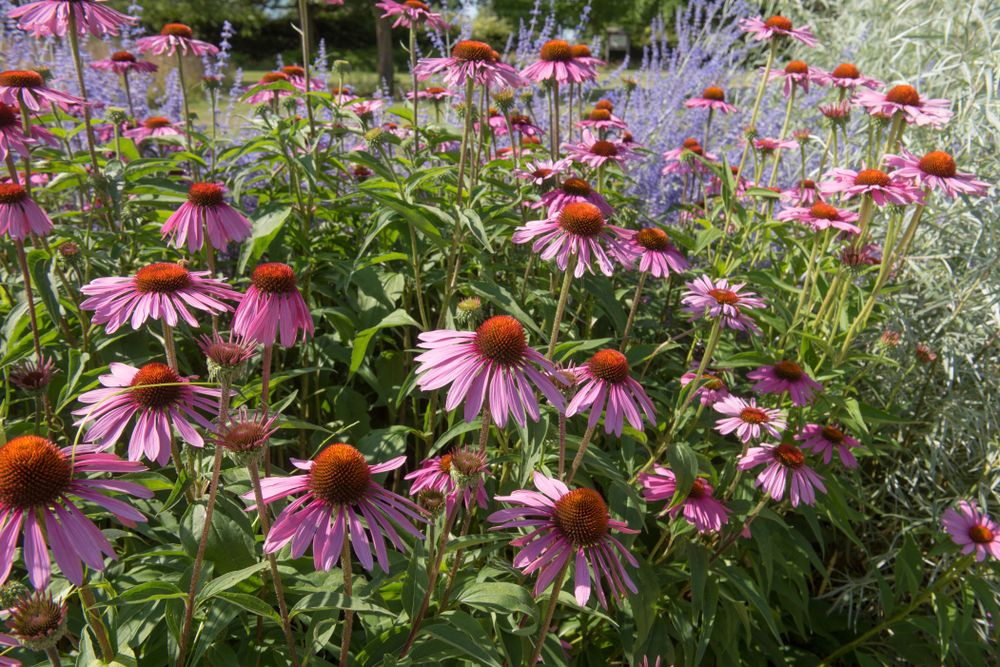
Echinacea purpurea – commonly known as purple coneflower – is a flowering plant of the sunflower family.
A showy perennial and favorite of the bees, echinacea have large, rounded cones surrounded by rich purple petals.
Native to central and eastern North America, its flowers and roots have been used as an herbal medicine for centuries by Native Americans.
Medicinal Uses:
Long used to boost the immune system, chemical analysis of echinacea has found echinacea contains numerous polysaccharides, flavonoids, and essential oils that have antimicrobial, antiviral, and anti-inflammatory properties.
Use it to treat the common cold and flu, as well as coughs, fever, sore throat, bronchitis, and upper respiratory infections.
Growing Conditions:
Hardy in zones 3 to 9, echinacea is drought tolerant and very easy going. Plant it in a spot that receives full sun in loamy soil enriched with plenty of organic matter.
How to Use & Store:
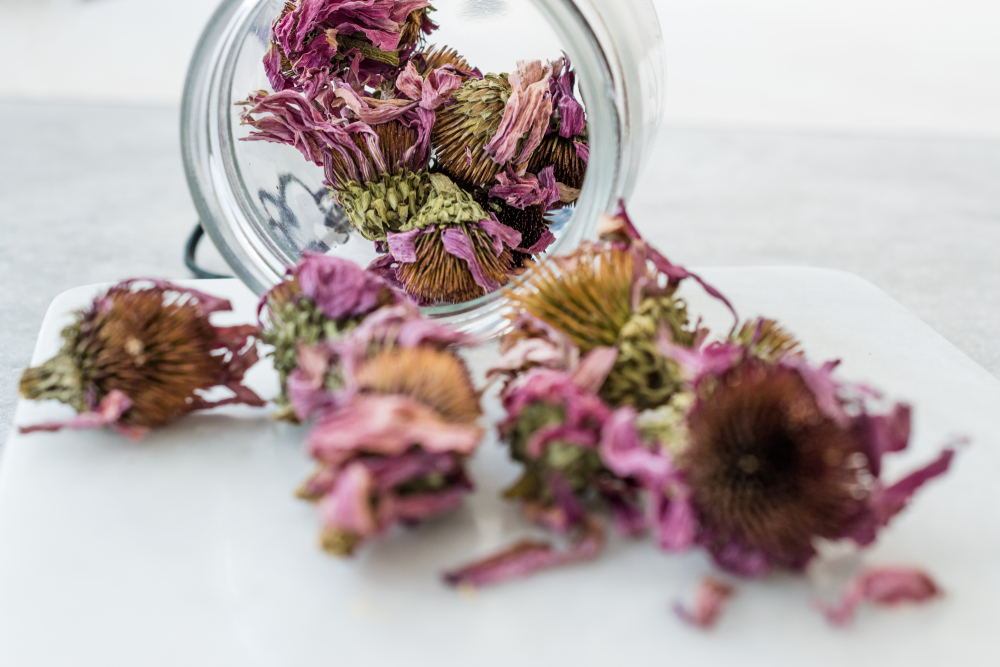
All parts of the echinacea plant – flowers, leaves, stems, and roots – can be hung up in a well-ventilated spot to dry for later use.
To brew up some healing tea, combine ¼ cup of dried echinacea with a cup of boiling water and allow it to steep for 15 minutes. To improve the taste, add a teaspoon of dried lemongrass, mint, or ginger, as well as some honey to sweeten.
To learn how to dry herbs at home, take a look at our tutorial revealing the two best ways to do it.
Cautions:
While echinacea is generally considered safe when used in the short term as needed, it should not be used over long periods as a preventative.
Stop using echinacea immediately if it causes nausea or stomach pains after ingesting. Some people may have an allergic reaction to echinacea, so use extra caution when consuming echinacea for the first time.
4. Peppermint
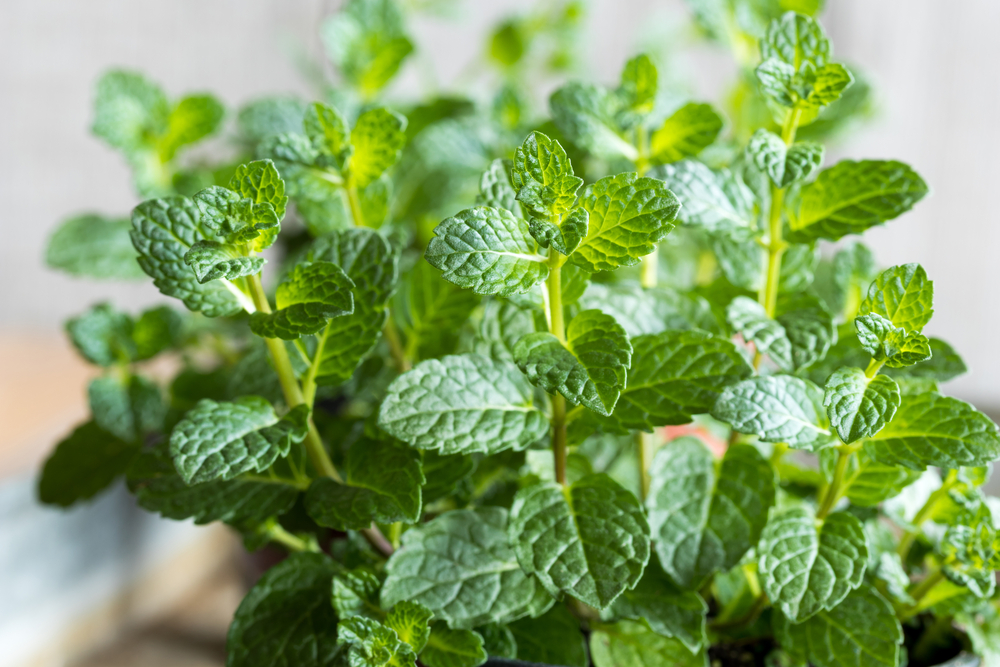
A tasty herb with plenty of medicinal value, peppermint (Mentha piperita) is an aromatic perennial plant native to the Mediterranean.
With square stems and serrate, deep green, crinkly leaves, peppermint is high in menthol which gives it its icy cool taste.
Medicinal Uses:
Peppermint is used to treat a wide variety of ailments in traditional medicine. It is perhaps best known as a digestive aid to remedy stomach cramps, nausea, diarrhea, irritable bowel, bloating, and loss of appetite.
In addition to its antibacterial and antiviral properties, breathing in peppermint vapor helps open up nasal passages and ease congestion. It may be used to soothe the symptoms of bronchitis, sinusitis, and asthma.
Peppermint also possesses analgesic value for headaches and migraines. When applied topically, it helps relax the muscles to ease pain in the neck, temples, and forehead.
Growing Conditions:
A fast grower that can reach 3 feet in one season, peppermint is hardy in zones 5 to 9. Although peppermint is highly adaptable, for best results plant in full sun and keep the soil moist.
Peppermint is also very easy to cultivate indoors as well.
How to Use & Store:
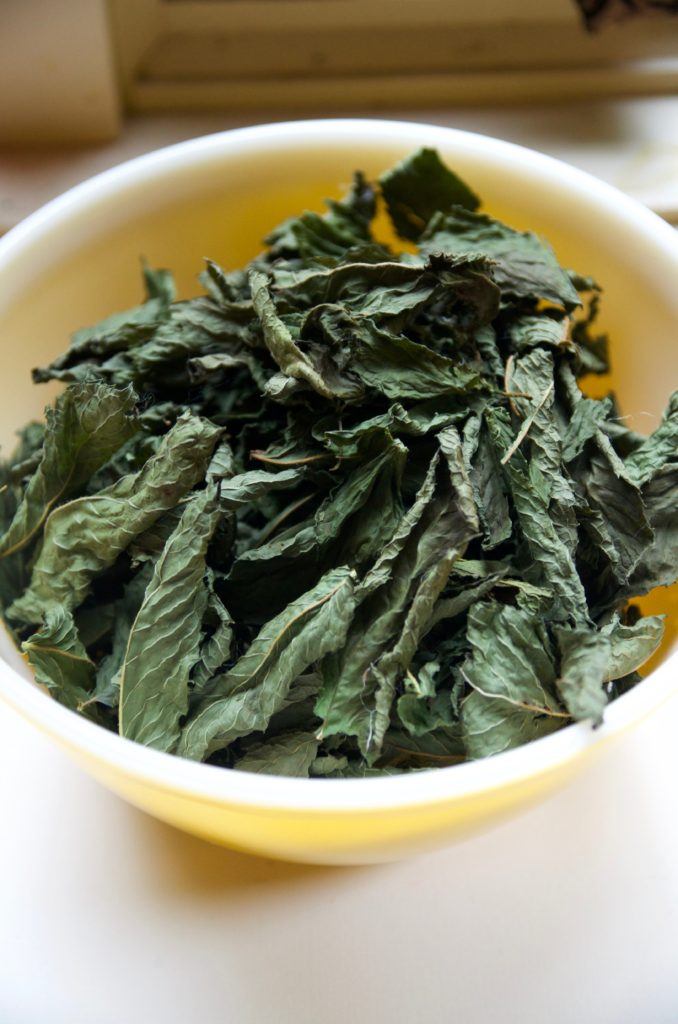
To make peppermint tea, steep 1 handful of fresh leaves or 2 teaspoons of dried mint in 2 cups of hot water.
To store peppermint, hang bunches to dry in a warm, dark space. Crumble them up when dehydrated and store in an airtight container in a cool spot.
Cautions:
Although no harmful effects of drinking peppermint leaf tea have been reported, try to limit your intake to 3 cups of tea per day.
5. Saint John’s Wort
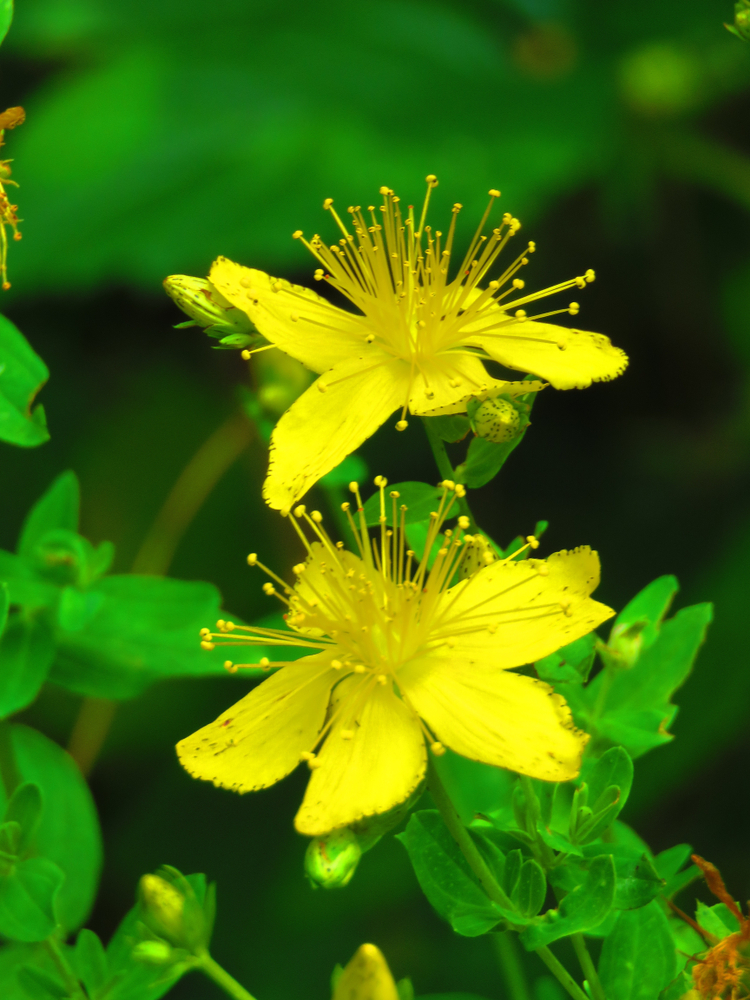
A native of Europe and Asia, Saint John’s wort (Hypericum perforatum) is a perennial flowering plant with oblong, dotted leaves on branching foliage that tend to have a bush forming habit.
The yellow flowers typically bloom on June 24 each year, the birthday of John the Baptist.
Medicinal Uses:
As one of the better studied healing herbs from ancient times, Saint John’s wort is widely regarded as nature’s antidepressant.
It is effective for cases of mild to moderate depression, Seasonal Affective Disorder (SAD), as well as the physical and emotional symptoms of premenstrual syndrome (PMS) and menopause.
Saint John’s wort also has broad anti-inflammatory action, helping to heal wounds and soothe redness, scaliness, acne, and other skin irritations.
Growing Conditions:
Saint John’s wort grows best in full sun to partial shade in zones 5 to 10.
How to Use & Store:
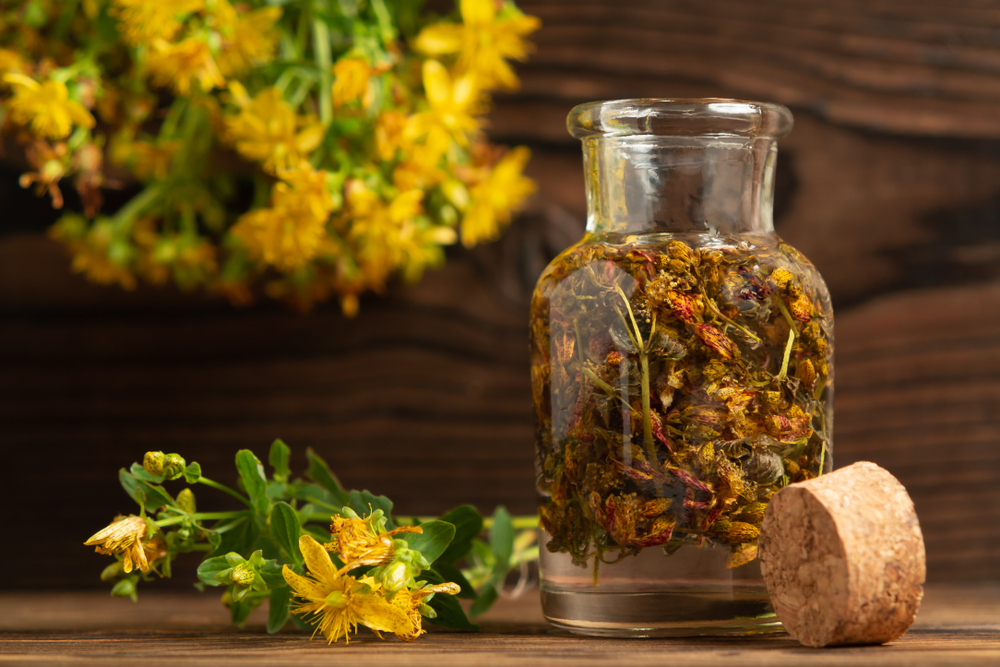
Harvest Saint John’s wort after it has flowered, when its bioactive constituents are at their highest.
Hang bunches to dry or use the leaves and blooms fresh.
To make tea, use 2 teaspoons of dried Saint John’s wort per one cup of boiling water and let it steep for 10 minutes.
This herb does have a bitter taste so add honey to sweeten, and toss in some optional flavorings such as lavender or chamomile.
Cautions:
Stop taking Saint John’s wort if you experience dizziness, confusion, or fatigue after consuming.
It may also interact with a number of prescribed medications, such as warfarin, SSRIs, and oral contraceptives, so talk to your doctor before taking this therapeutic herb internally.
6. Valerian
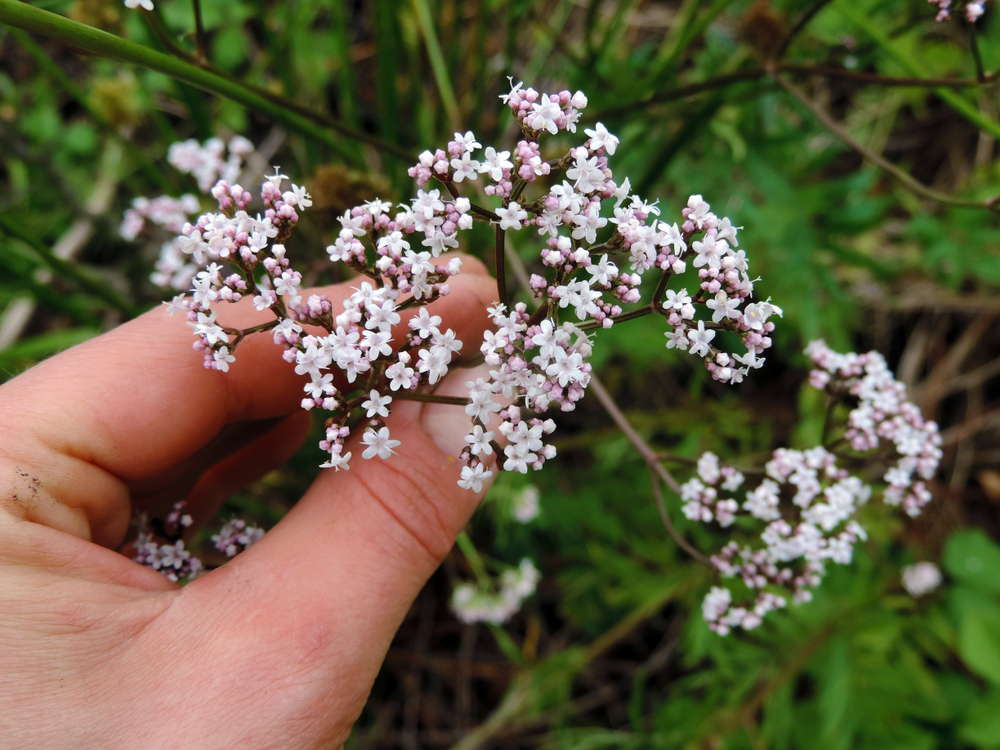
An herb used for medicine since at least the times of ancient Greece, valerian (Valeriana officinalis) is a clumping perennial with sweetly scented leaves, flowers, and roots.
As lovely as it is useful, it bears numerous tiny tubular flowers in white to pale pink, arranged in clusters of branched panicles.
Medicinal Uses:
While the flowers are intensely fragrant, it is the roots of the valerian plant that provide its therapeutic properties.
The best known trait of valerian root is its ability to induce sleep and improve sleep quality. Valerian is very useful to treat insomnia and won’t make you feel groggy the next day.
It has also been used to treat anxiety, restlessness, headaches, heart palpitations, and mental distress.
Growing Conditions:
Valerian is hardy in zones 4 to 7 and grows best in rich loamy soil in full sun.
Since valerian is highly adaptable to many environments, it is considered to be an invasive in some states. You can minimize its ability to spread beyond your backyard by deadheading spent flowers before they self-seed.
How to Use & Store:
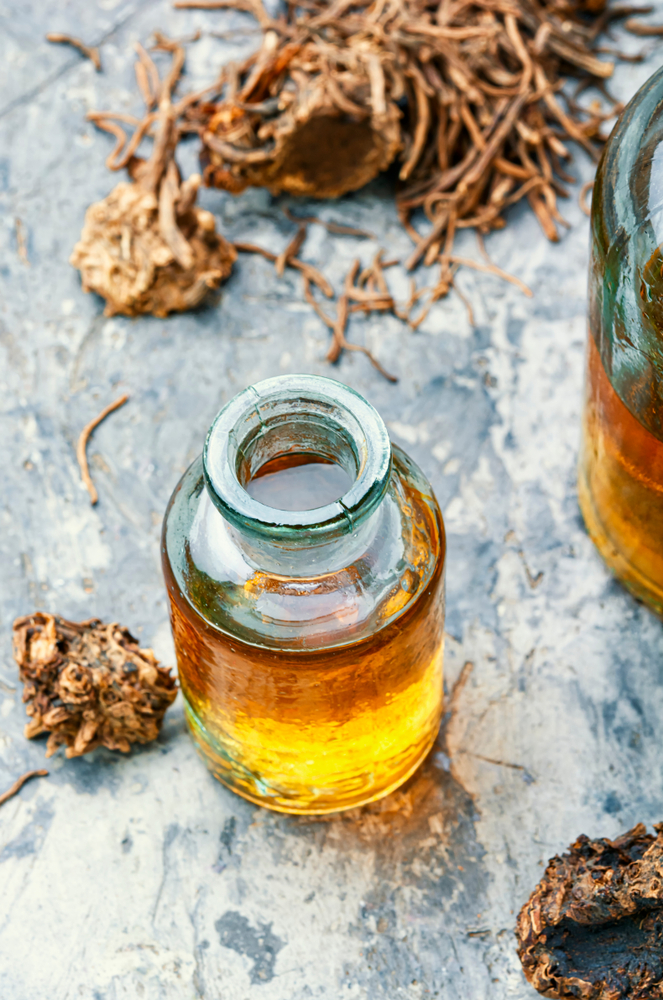
Valerian root can be harvested in the autumn of its first growing season.
Simply dig up the plant, discard the stalk and flowers, and rinse the roots clean of soil. Dry the roots in the oven (200°F for 15 minutes) or a dehydrator. Once completely dried, roughly chop up the roots or use a mortar and pestle to grind them into a fine powder.
To make valerian tea, use 1 teaspoon of dried root with 1 cup of boiling water and allow it to steep for 10 minutes.
Cautions:
Valerian has very few reported adverse effects and is generally safe to take. In clinical trials, the most common side effects were headache, dizziness, itchiness, and diarrhea; however, these same reactions were reported by people who took the placebo as well.
7. Yarrow
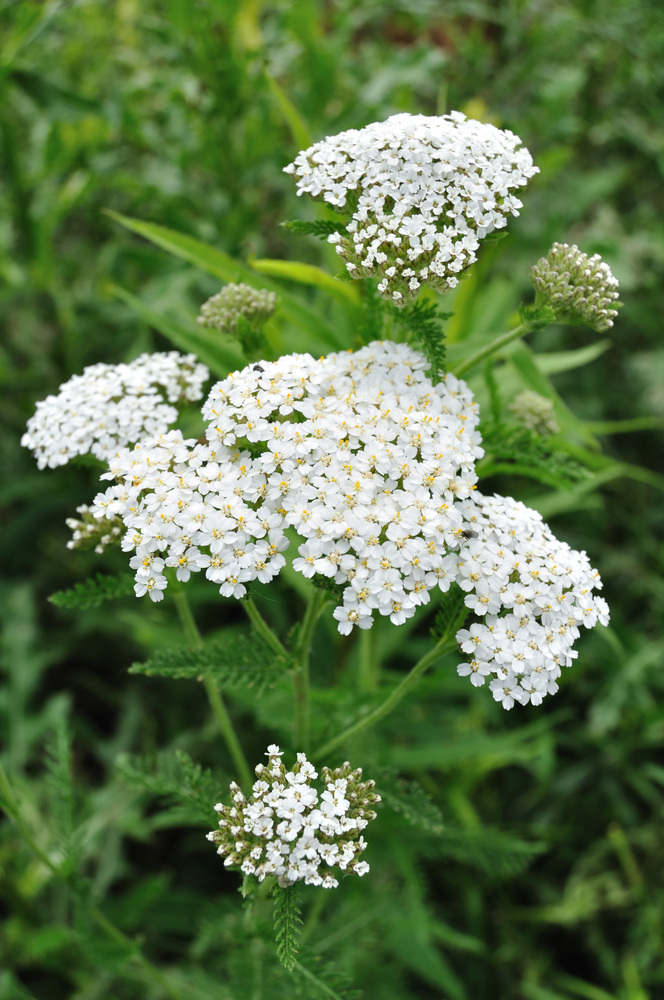
Yarrow (Achillea millefolium) is a spreading, herbaceous perennial plant with fern-like feathery foliage and aromatic, long-lasting white blooms that appear in dense, flattened corymbs.
Popular for many millennia as a medicinal herb, yarrow was one of the plants found in the Neanderthal’s grave.
Its genus is named after Achilles, the great warrior in Greek mythology, who used the plant to heal the wounds of his soldiers in the Trojan War.
Medicinal Uses:
Although clinical trials on yarrow have not been conducted to date, its far-ranging medicinal value is supported by its use in different cultures, places, and periods of time.
Historically, yarrow has been used to treat wounds to staunch bleeding, as well as inflammation, intestinal pain, headache, heartburn, diarrhea, toothache, loss of appetite, bronchitis, vomiting, fever, sore throat, digestive issues, and insomnia.
Growing Conditions:
An excellent choice for pollinator gardens, yarrow is hardy in zones 3 to 9. Plant it in dry to medium sandy loam in a spot that receives full sun.
How to Use & Store:
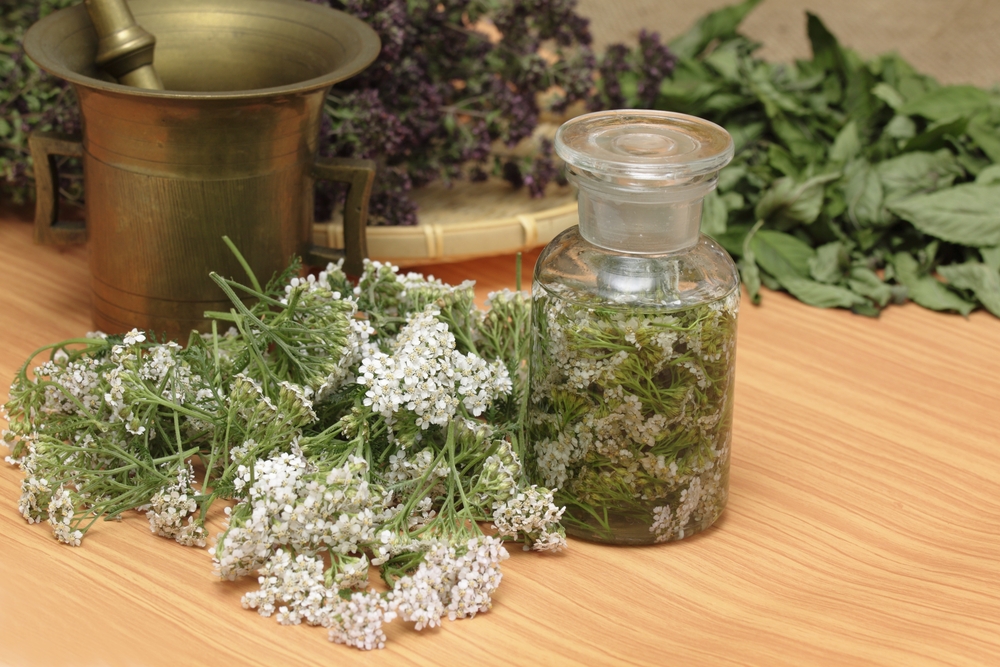
To make yarrow tea, add 1 heaping teaspoon of dried (or 1 tablespoon fresh) leaves and flowers with one cup of boiling water and let it steep for 10 minutes.
Once cooled, apply it as a poultice directly to wounds, bruises, and other skin irritations.
Yarrow may be dried by hanging whole stems in a warm, dry place. When dried, strip all leaves and flowers from the stem and crumble them up. Transfer to an airtight container and set it in a cool, dark spot.
Cautions:
Yarrow may cause an allergic skin reaction in some people so perform a skin patch test when applying it for the first time.
Read Next: How To Dry Fresh Herbs At Home – Two Best Ways

Get the famous Rural Sprout newsletter delivered to your inbox.
Join the 50,000+ gardeners who get timely gardening tutorials, tips and tasks delivered direct to their inbox.

